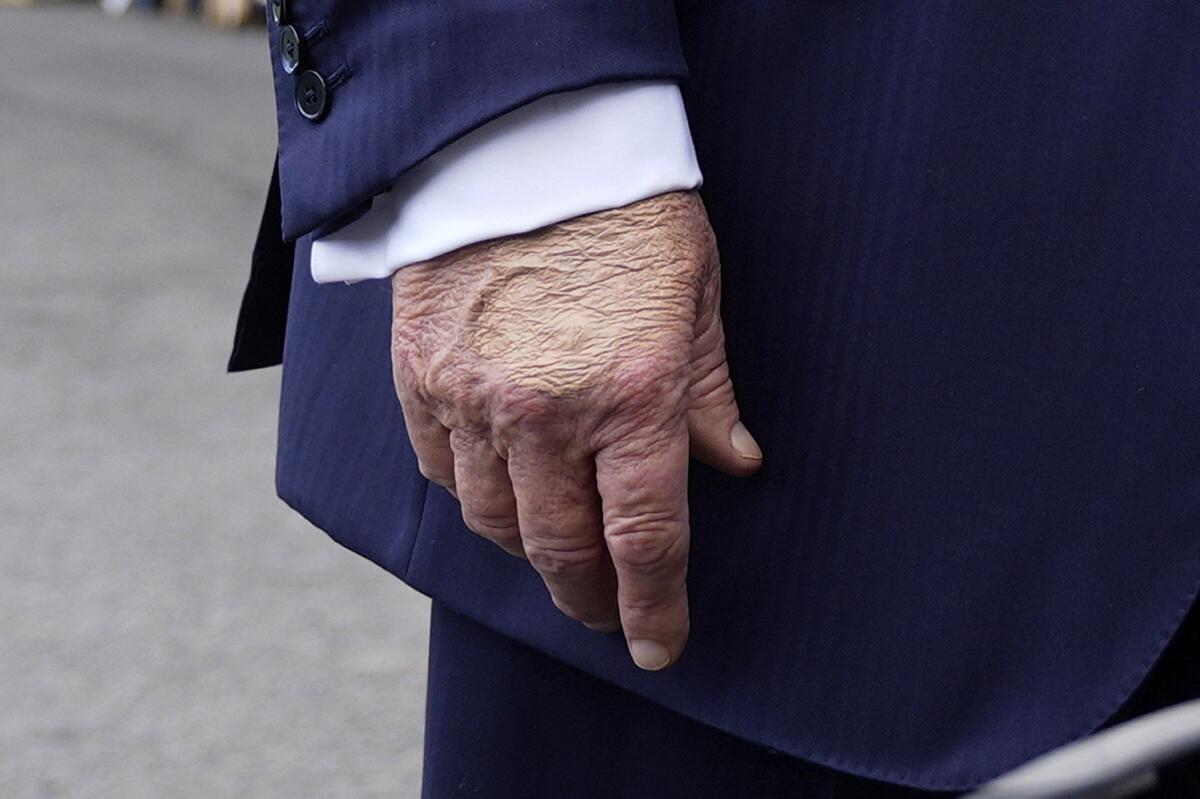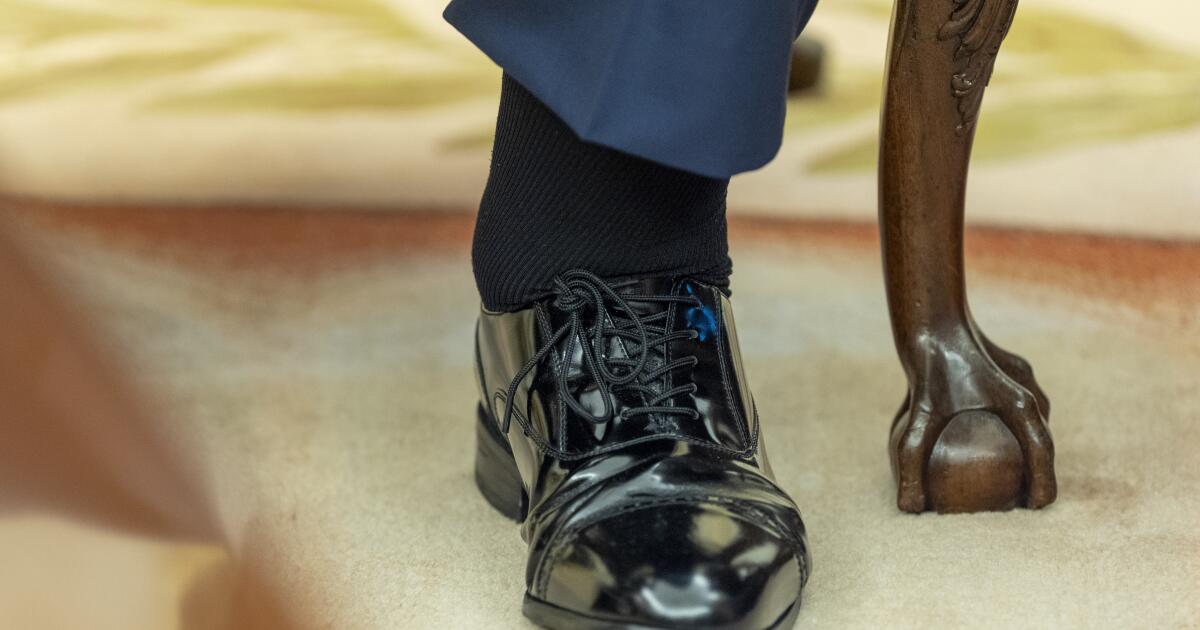What to know about President Tump’s ‘chronic venous insufficiency’
Earlier this week, President Trump was diagnosed with chronic venous insufficiency, or CVI, after he noted mild swelling in his lower legs. White House physician Dr. Sean P. Barbabella in a memo July 17 said the swelling prompted a full medical evaluation, including ultrasound tests and blood work. Those confirmed CVI, a condition the doctor described as “benign and common — particularly in individuals over the age of 70.” Dr. Barbabella said he found no other signs of more serious cardiovascular issues like blood clots and declared the president to be in “excellent health.”
What is chronic venous insufficiency?
“CVI is when the veins of the body do not work well,” said Dr. Mimmie Kwong, assistant professor of vascular surgery at UC Davis Health, when veins cannot transport blood effectively, causing it to pool, especially in the legs.
CVI is one of the most common vein problems in the U.S. and worldwide, affecting “about one in three adults in the United States,” Kwong said.
That translates to more than 30 million people in the U.S., most often older adults, according to Dr. Ali Azizzadeh, a professor and director of Vascular Surgery at Cedars-Sinai and associate director of the Smidt Heart Institute. He noted the condition is more common in women.
As people age, the veins, such as in their legs, may have a harder time returning blood to the heart, he said.
What causes CVI?
The valves in the veins of the legs are supposed to keep blood moving in one direction: back toward the heart. But when those valves are damaged or weakened, they can stop working properly, leading blood to flow backward and collect in the lower legs.
Individuals who stand or sit for extended periods, or those with a family history of vein issues, may be at a higher risk of developing the condition.
“When the calf muscles are active, they pump the veins that return blood from the legs to the heart,” Azizzadeh explained. “With prolonged inactivity of those muscles, blood can pool in the legs.”
What does CVI feel like?
While CVI isn’t always painful, it can cause discomfort that worsens as the day goes on.
The mornings may feel the best: “The legs naturally drain while you are lying down and sleeping overnight,” said Azizzadeh, “so they will typically feel lightest in the morning.”
As the day progresses and blood starts to pool, people with CVI may experience swelling, heaviness, aching or a dull pain in their legs. The symptoms tend to worsen after prolonged periods of standing or sitting.
If swelling worsens, thickening, inflammation or dry skin can result, with more severe cases developing wounds that do not heal and can even result in amputation, Kwong said.
FILE – President Donald Trump speaks to the media as he leaves the White House, July 15, 2025, in Washington. (AP Photo/Manuel Balce Ceneta, File)
(Manuel Balce Ceneta/AP)
How is CVI treated?
Ttreatment is more manageable when problematic veins are closer to the surface of the skin, Kwong said. It’s more problematic when deep veins are affected.
The first line of treatment is usually simple lifestyle changes. “We suggest CEE: compression, elevation, and exercise,” Azizzadeh said. Wearing compression stockings can help push blood out of the legs; elevating the legs allows gravity to help drain blood from the legs toward the heart, and regular walking forces calf muscles to pump blood throughout the body.
For people with more serious cases, doctors may recommend a minimally invasive procedure that uses heat to seal off the leaky veins. Common treatments include ablation techniques, surgical removal of veins (phlebectomy), or chemical (sclerosant) injections. “All of these therapies aim to cause the veins to shut down, so they no longer cause the CVI,” Kwong said.
FILE – President Donald Trump, left, reaches to shake hands with Bahrain’s Crown Prince Salman bin Hamad Al Khalifa speak upon his arrival at the White House, July 16, 2025, in Washington.
(Alex Brandon/AP)
In President Trump’s case, the condition appears to be mild and manageable. His doctors emphasized there was no cause for concern and that he remains in good overall health. But for millions of Americans living with CVI, recognizing the symptoms and knowing how to manage them can make a big difference in day-to-day comfort and long-term well-being.

